I Played Cities Skylines for 2500 Hours, and Here's What I Learned About City Planning
Cities Skylines is one of the few games that have continued to maintain my attention and delight me over the past few years. When SimCity ended, and Maxis shut down, I decided to look at the other city-building game that everyone was talking about. Like a refugee fleeing a war zone, I packed up my knowledge of city planning and scooted over to the Cities Skylines universe. I discovered that creating a city in City Skylines was different but allowed for more realistic cities than SimCity.
I’ve written about and posted videos about how we could revitalize and remake American urban environments, and playing this game has taught me a great deal about city planning. This is especially true because Cities Skylines is an agent-based game. The game aims to make it easy for citizens and vehicles to move around the map. I’ve built around 40 cities, and only now have I begun to make great cities. I’ve even started returning to older cities and trying to fix them up and make them more functional and beautiful. Players in this game will get fanatical about detailing their cities and go all out on placing things to make cities as wonderful as possible.
I’ve learned quite a few things about urban planning while playing this game. The game dynamics aren’t quite the same as the real world (why won’t traffic use all the lanes?!?!), but it is an education in dealing with all the dynamics of a built space and how people interact.
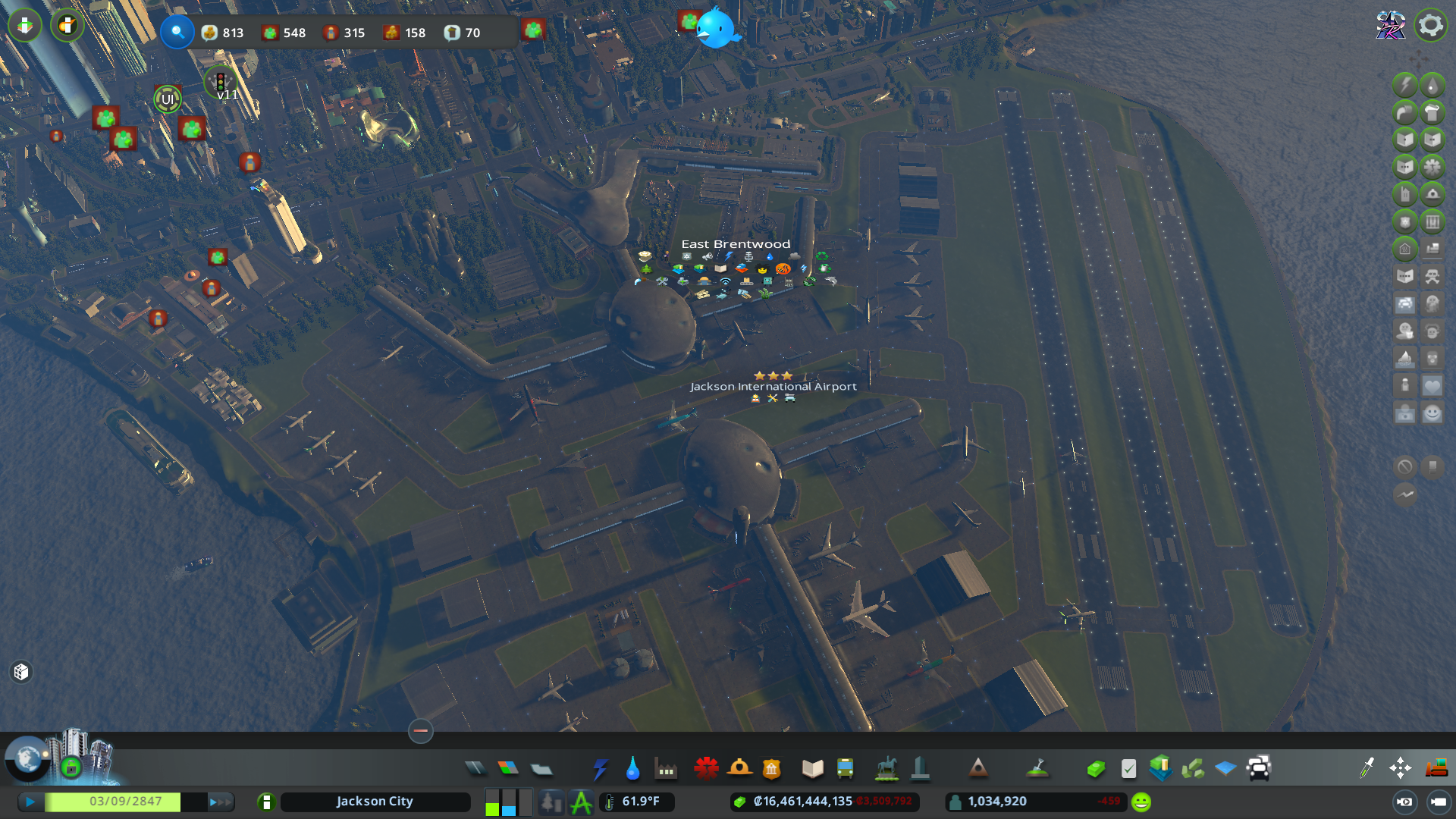
Getting Around
One of the biggest problems any mayor will face in this game is getting citizens moving around easily. Cities Skylines is an agent-based game. The actual play is making so each agent can spawn, complete its route and return promptly before they de-spawn. Dealing with traffic is probably the biggest challenge of the game.
The primary ways of getting around the city for the citizens are walking and mass transit. For mass transit to work well, Transit needs to be convenient and widespread. I found that a mix of transit options is helpful as well. The metro is perfect for local travel, trains for medium distances and airplanes for far travel. I also like bus routes to dig into certain districts and neighbourhoods. My goal is to make it easy to get to the shops, work, and leisure. I like to build neighbourhoods with a sense of community, not that the game rewards that, but I like to have leisure areas that are near residential so that people can easily get to and from them using transit or walking.
Dealing with traffic beyond cars is also difficult, especially as commercial zones generate little vans that need to pick up and drop off goods for them to sell. Also, with the Industries DLC (more on that late), it generates quite a bit of traffic that has to be managed. Getting industry traffic between where the industry is placed, ports, and shops can create plenty of traffic problems all on its own.
Urban Highways
Running an effective city without highways is hard, but it can be done. I’ve tried both setups in the game. The biggest trouble with running a city without a network of highways is dealing with heavy traffic, especially industrial traffic. In the game, you can set up industrial areas for different kinds of industries, and they generate plentiful amounts of traffic. Highways can relieve this traffic, but large roads can also do the trick, but that might require additional roundabouts to keep trucks moving at intersections. Highways are also great for dealing with cars, but a decent mass transit system can reduce car traffic, although not completely.
There is a movement, at present, that is against urban highways. I appreciate this idea, but I do think that sometimes an urban highway is a necessary solution for high-traffic corridors. Obviously, alternative transit options are great and certainly can move more people more quickly, but I’m not completely sold on getting rid of urban highways in their entirety.
Wishing for transit
I wish the US had transit as nice as any of my cities in cities skylines. I try to make it easy for my cime to go car-free. Although the cims don’t go truly car-free, in life, these transit systems would keep any city moving. I make sure that some form of transit can reach any part of the city. Every time I drive in Seattle, I wish to recreate any of my transit systems in my city. Not that we needed it said, but I will say it again, good transit is worth its expense. Keeping it close by, convenient, and running regularly is important in the game. Clearing up traffic jams and ensuring that transit runs smoothly will earn you high transit numbers. In the game, seeing 8-10K cims using transit each week across all transit types is good.
Noise
Citizens in the game are very sensitive to noise pollution. Although you can provide healthcare to them to help, it’s far better to reduce the noise in the basic design. One of the complaints about the game is that placing commercial areas near residential areas can cause noise. You can buffer that with trees, parks, or offices that generate no noise, provide jobs, and effectively block commercial noise. My biggest trouble is that I like my transit options to be close to where people are, but transit is not quiet. I often have extra noise pollution simply because I’ve put my transit nearby the people. I’ve tested putting it straight through neighbourhoods and on the edge. Putting it on the edge is better, but that also means you have to have a way for folks to get to the transit, depending on the journey.
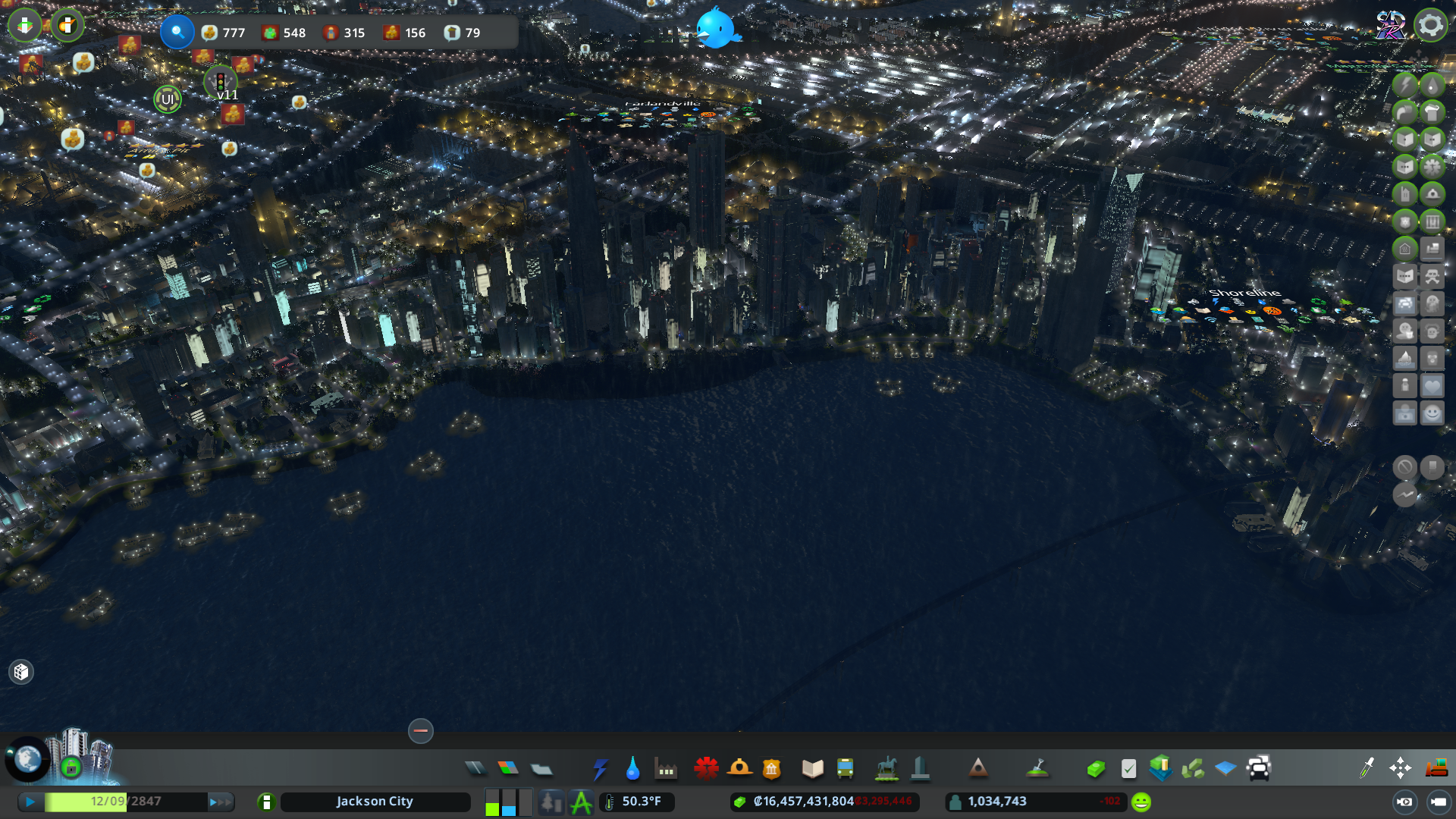
Neighbourhoods matter
One of the biggest complaints about the game mechanics is that good neighbourhoods are hard to build due to noise. However, you can overcome this by layering workplaces between residential and bars/nightclubs. However, shopping nearby, especially for essentials, is also vital. Ask anyone who has lived within 2 miles of their grocery store, and they will tell you how great it is. Now imagine being able to walk out of an apartment or house, walk to the grocery store and then maybe hop on the train to have drinks with friends later. Now also imagine that your doctor is nearby, along with the gym.
In each neighbourhood area, I ensured cims could access all city services in a short walk or transit trip. That’s the reality in Europe and parts of the US. That flexibility and convenience are what make for a great neighbourhood. Although this can cause noise issues (see applicable section), it is much easier to keep those shops busy with plenty of customers if the city is planned in this manner.
Cities have cycles
One of the things the game gets right, and I’ve somewhat muted with a mod, is how cities have cycles. People grow up, get jobs, have children, retire and then die. Cohorts of people do this together because they are the same age. At any given moment, you have groups of people doing this together in a city, both in the game and in real life. This means that cities go through growth and expansion cycles and then contraction. Sometimes, it is good to revitalize a city and make necessary updates and repairs. Even in a game where things don’t “wear out” as such when playing the game long-term, it is important to continuously look for traffic routes that are clogged due to new development or to create new neighbourhoods. Sometimes, especially if you have abandoned buildings (I don’t), you need to bulldoze and let an area redevelop. It is always interesting to watch a new cohort of cims go through school and break into society, taking on various jobs around the map.
Jobs, jobs, jobs
Cities Skylines has an interesting mechanic where the only thing that attracts growth to your city is jobs. This makes sense as it is also true in life. Tacoma, WA, would be a great city with a major employer. Unfortunately, it is cursed by being between two great cities: Seattle and Portland. In Cities Skylines, managing employment is a constant struggle. You can have too many job openings and you can also have not enough jobs. This gets especially difficult as the education of your workers increases over time. I use a mod to moderate some of the effects of the game. However, it is always good to have a district with poor education services for jobs that don't require much education. You can also use city policies to encourage people to go to work instead of staying in school. However, much like in life, everything in the city is powered by jobs, jobs, jobs. No matter how good your education system or your universities are, you have to ensure that there are jobs available for your cims.
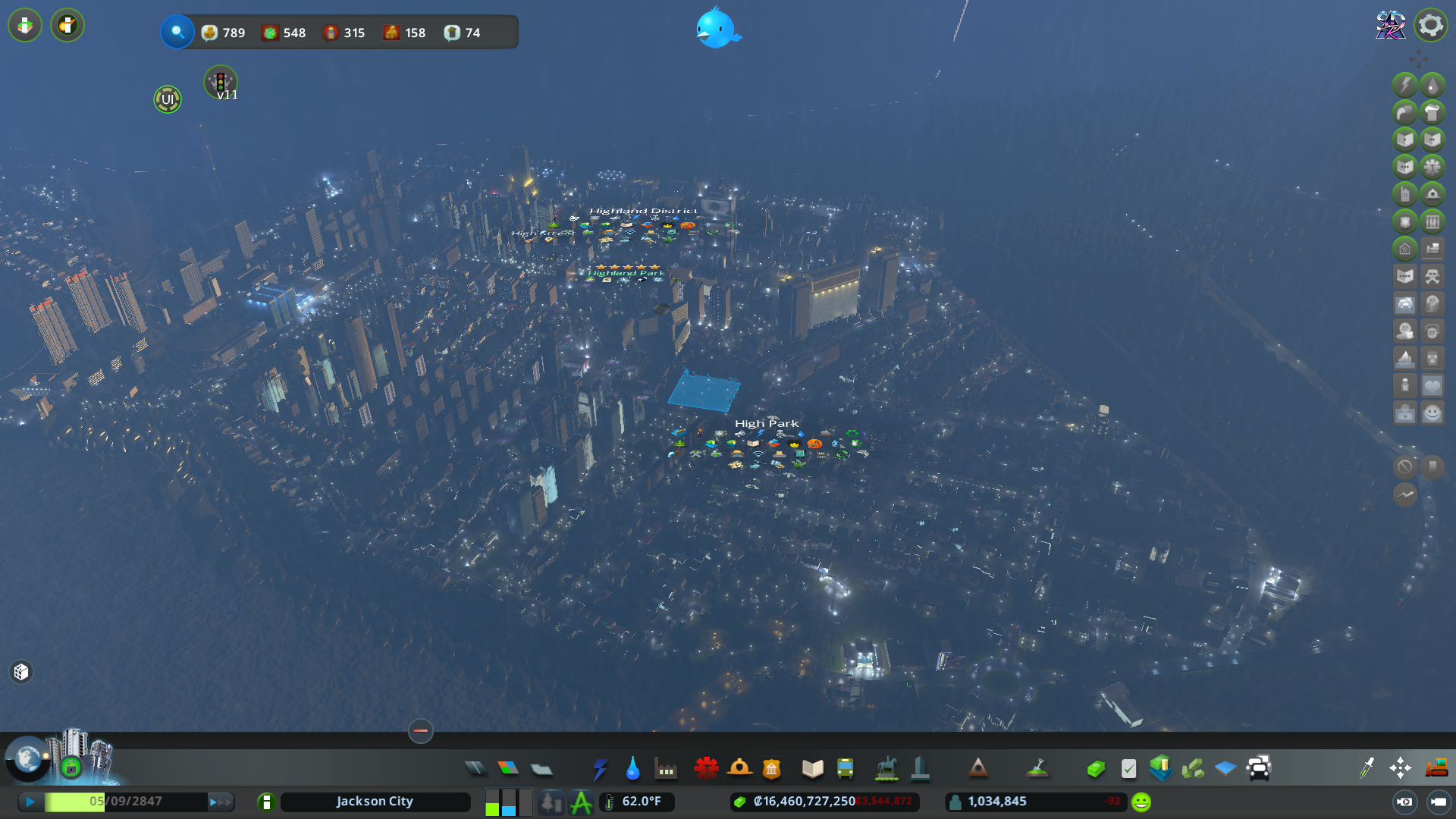
The arts
The arts will not save your city, but it’s nice to look at. I always like to plop as much stuff in any city as possible. I like to build these art districts where there are museums, aquariums, opera houses, libraries etc., in a central area so that it can attract tourism and look pretty at the same time. However, it is still important to have industry and other things happening in your city (like universities). Much like Tacoma, WA, the arts won’t save your city, but they are nice to have in any city. If the arts generate more high-paying jobs and revenue, it would be a different story. Seeing as they don’t generate as many good jobs as a steel plant, it is important not to rely on the arts to keep a city going. The vast majority of folks need somewhere else to work.
First responders matter
Unlike the real world, the city manages all your first responders. There are no pesky special districts and boards to worry about. When they are well placed and well funded, they work well; if they are underfunded and ineffective, cascading problems start, including sickness, crime, and fires. One of the big complaints about the game is that you can put in a fire station, and all the trucks can be anywhere else in the city and not able to respond to a fire right in what should be their zone/district. I find this convenient because I can plop fewer fire stations, police stations, and hospitals than normal. After all, the first responders will go wherever the emergency happens. Getting this balance right is vital to a functioning city; without a robust ambulance/police/fire service, things will spiral out of control.
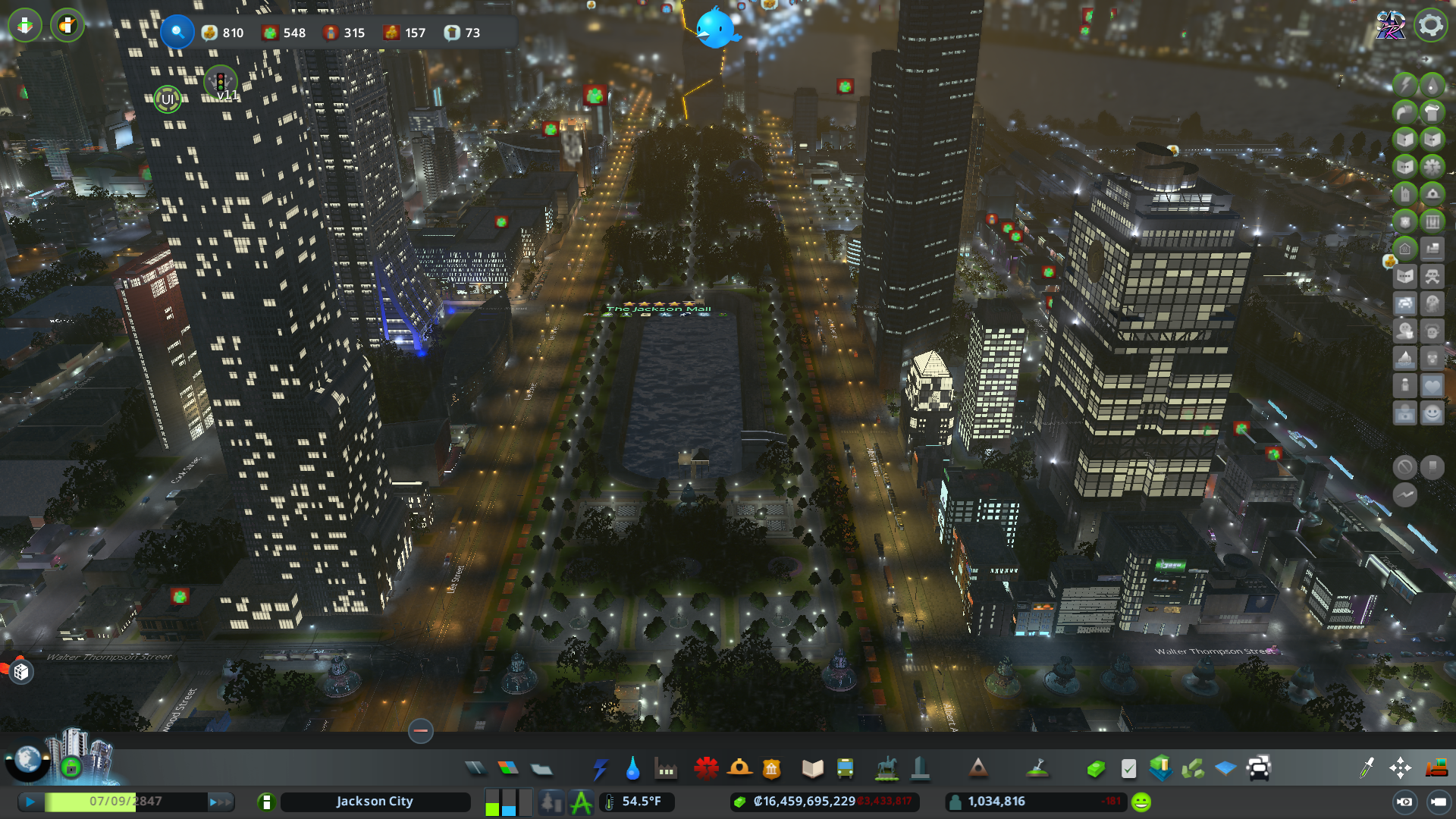
Final Thoughts
I still miss SimCity4. I miss the SimCity series. City building was easier. However, I have come to appreciate the realism of Cities: Skylines. I enjoy watching the traffic. I have yet to get traffic above 75% because I run an increased traffic mod. I have twice the number of max vehicles allowed running, which will snarl the best traffic system. However, I have enjoyed modding cities, using custom buildings, and making giant beautiful cities. I have learned to enjoy and value this game, and I know I will keep playing for years.
I have also seen the shortfalls of different cities nationwide, especially when I travel. I can tell a good interstate on-ramp from a bad one. I can often tell why an interchange causes traffic rather than alleviates it. In truth, anyone in charge of transportation and planning should put in hours in this game and watch what happens with different changes and scenarios. This is particularly true for politicians. This kind of education is invaluable when planning cities and approving transportation projects. Understanding how a city works from the inside out should require learning all city council people. Understanding the systems of a city and how a city works would be invaluable knowledge to have at the city and regional levels.
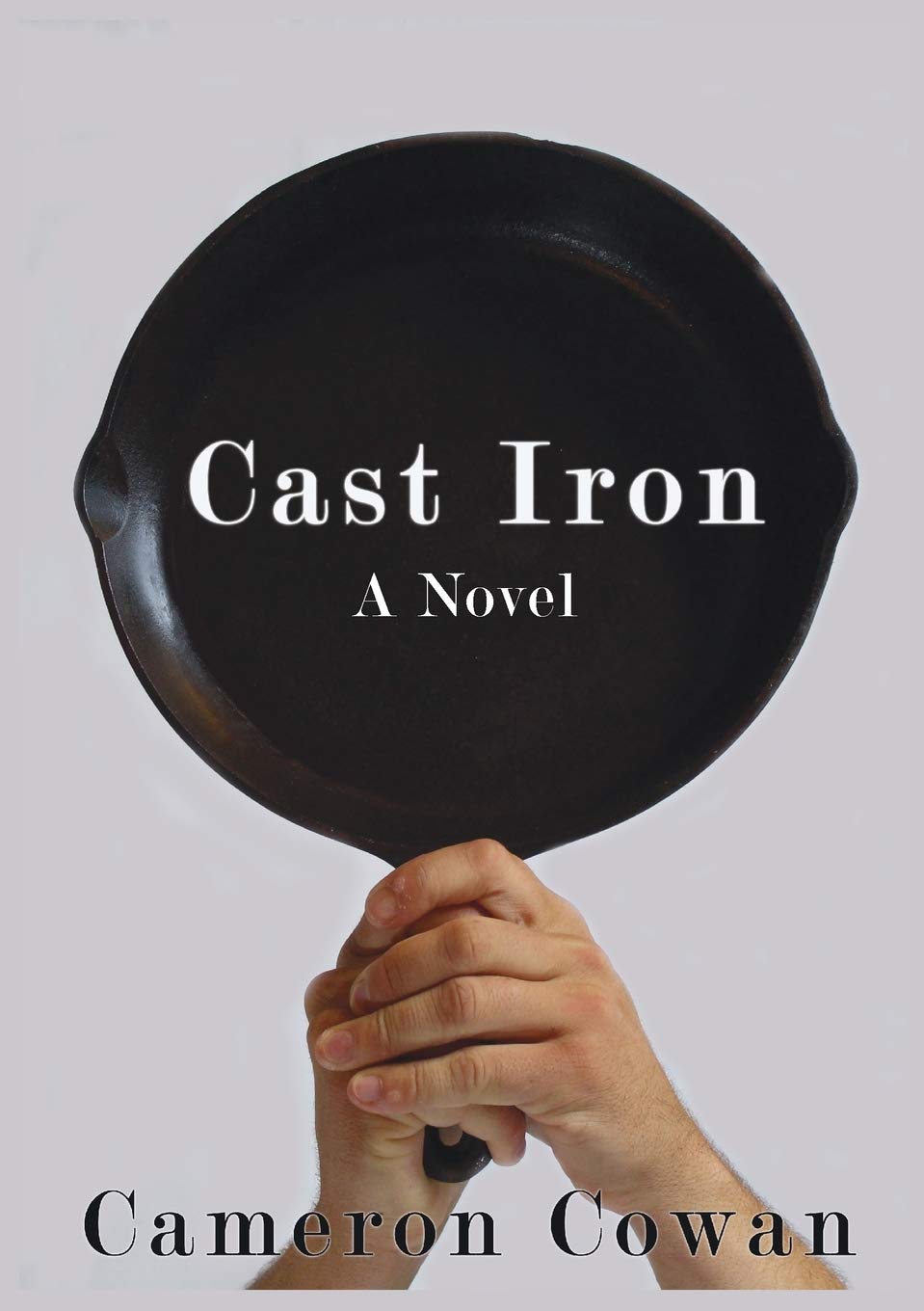
Cast Iron (a Novel) by Cameron Cowan
When Randy Carruth starts a new life with his sister, mother, and new husband, he never anticipates that this new life could be dangerous and even deadly. Cast Iron explores what happens to a young man lost in the prison system and lost in the world on a journey of forgiveness.
Cast Iron is the story of Randy Carruth, who discovers that his new step-father is not what he seems. He tolerates it for a time, believing that he can do nothing. One day, when he discovers his sister being attacked, he makes a fateful decision that sends him to jail. After being released, Randy enters a world of drugs and male prostitution. Will he ever find his way home? Can he find forgiveness for those that have wronged him and broken his heart?








